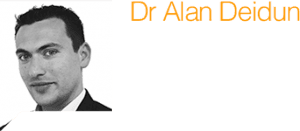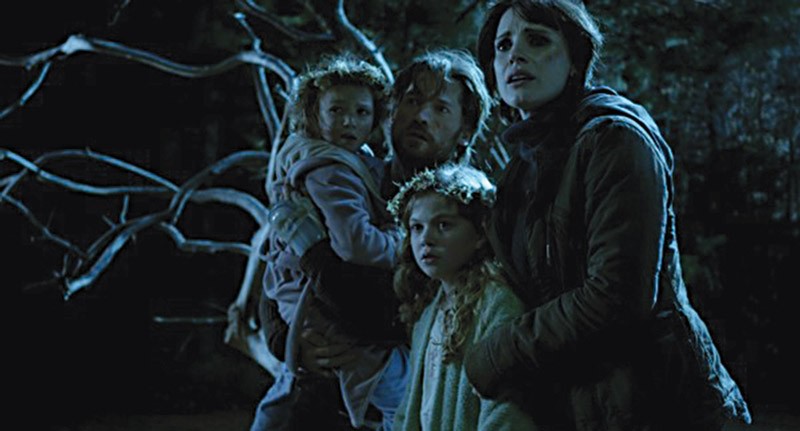Can you die of boredom?
A tricky question since boredom is a mental state. Usually it is triggered by an uninspiring, monotonous environment and/or certain brain chemicals like dopamine (more on dopamine). People who produce less dopamine, or are less sensitive to it, are bored more easily.
People bored for a very long time can suffer from clinical depression, which surely reduces lifespan. Other boredom sufferers have ADHD (attention deficit hyperactive disorder) and extreme ways of combating boredom can be equally dangerous. They could abuse drugs and alcohol or seek thrills in risky sports. Others could become sexually promiscuous. All of these behaviours reduce lifespan.
Send your questions to think@um.edu.mt and we’ll find out if it’s the truth or just a fib!
With an eye on the sea
 Dr Alan Deidun writes about a warming Mediterranean Sea, a recently built centre in Gozo, and collaborations with economistsContinue reading
Dr Alan Deidun writes about a warming Mediterranean Sea, a recently built centre in Gozo, and collaborations with economistsContinue reading
An Alternative Currency
Mario Frendo
Malta — a tiny Island, a minute social reality, a precursory canovaccio of European unification — has a unique asset it ought to be prouder of: Culture. For millennia our bonsai place has attracted a continuum of passing civilisations leaving behind them a most colourful and diverse compendium of customs, behaviours, artistic expressions, and intellectual attitudes. Malta’s investment in this unique legacy should not be limited to conservation. It needs to be kept alive through constant support of the contemporary expression of its youth. This attitude will certainly transform our Culture into a most effective and efficient currency of change and growth.
Hotline Miami
Push start. Grab a weapon. Get shot. Repeat… ad infinitum. ‘Punishing’ hardly describes a session of Hotline Miami. Typically, within 10 seconds you could die three or four times. It is just as frustrating as it is challenging. Addictively, you will not give up until you pass that sneaky little passage.
Hotline Miami is an ultra-violent, psychotic game, where your only aim is to kill all the ‘bad guys’.
Yet, every little move counts, and deciding which weapons to use or which door to open first will reveal the deep strategic possibilities of the game’s intense experience. As you make your way through a pile of corpses, the suspense builds up to unbearable levels as you risk losing all in-game progress for just a little mistake. The massacre is only interrupted by brief moments that reveal details of our mysterious ‘hero’s’ back-story. Keeping true to expectation, even these interludes are awkward if not disturbing, and hardly shed light on our displaced, faceless avatar.
The excellent game tops it all with an irresistible ‘80s aesthetics and a neurotic electronic soundtrack. You’ll quickly find out why this game has stolen the show winning so many awards, and has hooked fans of Grand Theft Auto and of good old shoot’em up games. Hotline Miami is a joy in repetition, providing that being stuck in a Clockwork Orange–like scenario is your idea of joy.

To drive or not to drive
Rush hours, feasts, festivals, beaches in summer, Paceville on Saturday night, all have one thing in common: traffic. Malta has one of the largest traffic problems in the world. Researchers at the University of Malta are trying to figure out what can be done to ease road rage and reduce drivers’ lost time.
Continue reading
Bad Pharma
The author Dr Ben Goldacre is on a mission. The $600 billion pharmaceutical industry, some doctors, regulators, medical journals, and whole governments should be trembling. Goldacre wants to show the truth behind how our medicines are made. He wants transparent companies, properly informed patients, solid research, and cheap, effective drugs, preferably for all.
In typical Goldacre style, he rants. Ignore the apparent chip on his shoulder. His statements are thoroughly based on facts. The facts are shockingly scary.
Take the drug Tamiflu, the supposed miracle cure for flu. The pharmaceutical company Roche made over €500 million in 2009 on the back of the swine flu scare. The drug is known to reduce flu symptoms by a few hours, a hefty price tag for a spot of relief. Initially, Roche said that it reduces complications by 68%, amazing! Though when the gold standard reviewer Cochrane started scratching the surface they hit a brick wall. Roche refuses to publish data requested years ago and we still do not know how effective it is.
Even regulators get it wrong by being too business friendly or opaque. Diabetes drug Rosiglitazone was recently taken off the market after over 10 years of intimidating researchers who published data against the drug in 1999. Rosiglitazone increases heart problems by 43%. Regulators failed to share data transparently, which slowed action, an endemic problem.
Pharma has even failed cancer patients by stopping trials early to make drugs look better. Trials can also be run longer than needed to fuzz data. Goldacre lists endless examples to buttress his arguments.
Companies spend double on marketing drugs compared to research. In the US they can reach and influence consumers directly irrespective of efficacy, price, or need. Where direct marketing is banned, companies shift budgets and reach doctors through drug reps, people whose job it is to convince medics that their company’s drug is the best. Pharma even disguises marketing as research fooling doctors and wasting their time. Well-respected doctors are also paid handsomely to talk about products.
Apart from scandalous facts, Goldacre is a master of explaining science simply and clearly. Chapter 2 has a great introduction on how drugs are made. He clearly explains the difference between relative risk or absolute risk, or how bias and probability are manipulated by pharmaceuticals. His lucid style makes this book a great read and well recommended for anyone wanting to know the dirty secrets behind pill manufacturing.
Thankfully, Goldacre also suggests how it could be solved. My only advice is not to debunk the whole system when reading this book, remember the good stuff: life-saving antibiotics, disease eradicating vaccines and much more. The current system just needs some serious tweaking to remove the bad loop holes Big Pharma exploit to meet profit margins. But drug research has to go on.
Mama — Film Review
Electricity has killed the ghost story,’ said author Ruth Rendell while commenting on a tale by M. R. James. She has a point. The ectoplasmic posse thrives on darkness, occupying those spaces that elude the intrusive sanctuary of light. Thomas Edison and his light bulb must be the greatest ghostbusters of all time and Andy Muschietti’s film Mama, one of their latest casualties.
Candlelight encourages unnerving narratives: a flickering flame, after all, choreographs crazy cavorting shadows. And gaslight creates pools of light amid pitch blackness, which is why the Golden Age of the ghost story was between the 1830s and World War I, when candles and gas were mostly used.
A trip to the cinema combines all three: the film is essentially a beacon of moving shadows (candlelight) on a screen surrounded by obscurity (gaslight) and a source of electricity (the projector). In a way the cinema offers horror lovers what the ghost writers of old offered to readers: access to the land of the Bogeyman.
The Bogeyman, or Babau, or El Cuco, or whatever you want to call it, is scary as hell because we never get to see him. He is not really underneath the bed, or inside the closet, or waiting by the wayside to snatch those pesky children and put them in a sack. Then again, he might be there, waiting for the right moment to strike. Ghost stories need this kind of tension to instil a sense of dread.
“The latest movie trend is to dispense with tension in favour of a sedated compromise to appease a mainstream audience”
Unfortunately, the latest movie trend is to dispense with tension in favour of a sedated compromise to appease a mainstream audience. Mama falls into this trap. The film revolves around the battle between two mums, one alive and one dead. They are both surrogate mothers as the two girls’ real parent was killed by their very anxious dad. The arising conflict drives the narrative forward but then everything goes belly-up when the ghost, in all its CGI glory, takes centre stage. And, of course, CGI is all electricity.
Once the ghost of Edith Brennan becomes a central figure in the story (visually), the excellent sense of amassed dread all but disappears. Instead, CGI wizardry takes over: magnificent wraithlike tendrils of ghostly garb, creepy head tilted at a slightly awkward angle, a face that might stretch and scream at any moment, giving us the intended scare. We are shown too much. Movies such as Paranormal Activity (2007) and The Innkeepers (2011) take a better approach by creating and sustaining suspense by only showing the bare essentials. They leave you gripping your seat.
So: is Mama any good? Well, yes, in an average-film kind of way. But there is definitely no need to watch it with your lights on.
Story Works — The craft of weaving great stories
The Einstein Enigma
We experience gravity everyday, but how it works is one of the biggest questions in physics. Einstein’s theory of relativity means that we don’t understand over 90% of the Universe. A team at the University of Malta is trying to put that in order.
I do not know what I may appear to the world, but to myself I seem to have been only like a boy playing on the seashore’, said the famous Isaac Newton. Humanity has progressed in its search for answers by always searching for the next smooth pebble, the next pretty shell. In Malta, a small group of students is trying to understand gravity through the observation of stars and galaxies that light up the night sky.
Gravity has kept our feet on the ground since we started walking upright. Early theories by the Greek philosopher Aristotle (384–322 bc) were interesting but far from the truth. His Universe was built in concentric spheres with Earth at the centre, followed by water, air, fire, and enclosed by the heavens — a rock fell to the Earth because it wanted to go to its original sphere. Clearly, he was wrong.
Aristotle’s concepts were challenged during the Renaissance when the Italian Galileo Galilei (1564–1642 ad) infamously dropped different weights from the tower of Pisa. Contrary to the Greek theory which stated that the heavier an object is, the faster it falls, Galileo saw the objects all fall at the same rate. Theories need to match observations, otherwise they fail — an invaluable technique used time and again by any decent scientist including the Malta group of astrophysicists led by Dr Kris Zarb Adami.
“Space is a dynamic entity ‘moving forward in time, the two being bound by light itself”
The first person to suggest a good theory for why rocks fall was Isaac Newton (1643–1727 ad). As the story goes, watching an apple fall triggered Sir Isaac Newton to come up with his theory of bodies. He said that anything with mass had a force that attracted everything towards it — the bigger the mass, the bigger the force. Since the apple is smaller than the Earth, it falls towards it, and since the Earth is smaller than the Sun, the Earth goes around the Sun. Newton’s law was successfully used to predict the motion of planets and helped discover Neptune.

By the 20th century, holes in Newton’s ideas started to appear when scientists discovered that Mercury’s orbit differed slightly from Newtonian predictions. In 1915, along came Einstein (1879–1955 ad) who again revolutionised our understanding of gravity through the introduction of his theory of general relativity. Newton had considered time and our three-dimensional space to be independent. Einstein replaced this with the notion of spacetime, which combines space and time into one continuous surface. Space is a dynamic entity ‘moving forward’ in time, the two being bound by light itself.
Large objects like the Sun bend the fabric of spacetime (it is convenient to think of spacetime as a sheet of fabric with balls lying on top of it — bigger balls curve the fabric more). Smaller objects (such as the Earth) try to follow the shortest route around the Sun. The shortest way is curved and it is easy to see how this comes about.
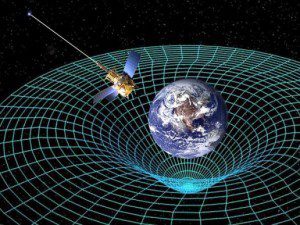
Consider the shortest route from the North Pole to the South Pole, you would naturally move down a curved longitude, which forms part of a circle round the Earth. This concept also explains why the Earth traces an orbit round the Sun. The orbit is the ‘best straight line’ that Earth can trace
in the curved spacetime surrounding the Sun. As John Archibald Wheeler neatly summarises it: ‘Spacetime tells matter how to move, matter tells spacetime how to curve’.
Einstein’s biggest blunder
Einstein’s theory of general relativity describes how gravity works. Einstein wanted his equations to represent a static Universe that did not change with time. To this end, he introduced a factor called the cosmological constant that would bring the Universe to a halt. However, this idea was short-lived. Another great (though highly egotistical) physicist called Edwin Hubble discovered that the Universe was expanding; this was confirmed in the late nineties and led to a Nobel Prize in 2011. It not only means that all matter will eventually disperse throughout the Universe and future generations will see only a blank night sky, but also poses a problem in that the reason for this expansion is completely unknown and unpredicted from Einstein’s theory. And it is not a small factor at all, since this mysterious energy makes up 68% of the energy in the Universe. Nicknamed ‘dark energy’ because it is unseen, this is the biggest problem in modern astrophysics and cosmology.
“If a star’s light is being bent by a galaxy, from Earth it will appear that the star’s light has changed, when in reality it would not have changed at all”
Scientists either have to accept that dark energy is true, or that Einstein’s model has met its limits and physics needs a new way to model gravity, at least on the largest of scales. The Malta astrophysics group is trying to verify and find new models of gravity — these so-called alternative theories of gravity. The idea is to compare observations to the different gravitational theories, including Einstein’s, and see which works best.
Our focus is split two-ways: one is the effect that celestial bodies have on each other’s orbital motion and the other is the bending of light around heavenly bodies. For example, our sun bends spacetime, causing the planets to go round it in ellipses. The sun also wobbles around a very small orbit. Observations show that the orbiting objects go round a bit longer than we would expect. The extra amount is miniscule, so measurements are taken after many orbits as this magnifies the effect. We use this as a possible test to disqualify alternative theories and have already shown how an important alternative theory of gravity cannot be true.
This is how fundamental science works. If a model does not match observations it needs to be modified to arrive at something that does give all the predictions we require. The end result must be a complete theory by itself but the different components could find their birth in a wide variety of unconnected sources.
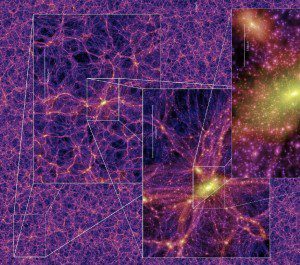
The Malta astrophysics group considered a theory called conformal Weyl gravity that is similar to general relativity in every respect except one. This theory behaves exactly like Einstein’s but imposes a further constraint — mainly that the gravitational field remains the same no matter how much it is stretched or squeezed. Simply put, as long as the mass remains the same, gravity does not change. This assumption solves many problems. It makes dark matter and dark energy unnecessary. Dark matter is needed to explain the motion of stars in galaxies. Like dark energy, it is called dark because it cannot be seen or analysed in any way. Making them irrelevant would fill a gaping hole of knowledge for astrophysics.
When the group tested the Weyl theory, it gave the same result as general relativity and a small additional term. That was not a problem, since effects of this term were so small that they could not be observed with today’s largest telescopes. The problem, as shown by the Maltese astrophysics group, is that the term grows larger with distance and contradicts observations at the largest galactic scales. This was an important nail in the coffin for the Weyl theory of gravity and Einstein’s theory still remains the best model.
Our next step is to test other alternative theories of gravity by analysing how objects orbit each other. In the same way we disproved conformal Weyl gravity, we hope that these tests will help astrophysicists to eventually come closer to a model that correctly explains the cosmos.
Bending light
Gravitational Lensing is perhaps the most sensitive test of gravity on cosmological scales. To understand how it works, consider a lit candle and a wine glass. Imagine holding the wine glass and peering at the candle through the glass’ base. The flame will be distorted and changes shape. Now picture you are with a friend who stands a couple feet by your side. The flame will appear normal to them since they are seeing it from a different perspective and the light does not pass through the glass. Two people with a different point of view see different flame shapes. The wine glass’ base distorts the flame because it acts like a lens changing the direction light travels. Obviously in the Universe there are no wine glasses between the stars and the Earth but objects with huge masses like our sun or galaxies can act like a lens and bend the direction of light by the sheer force of gravity.
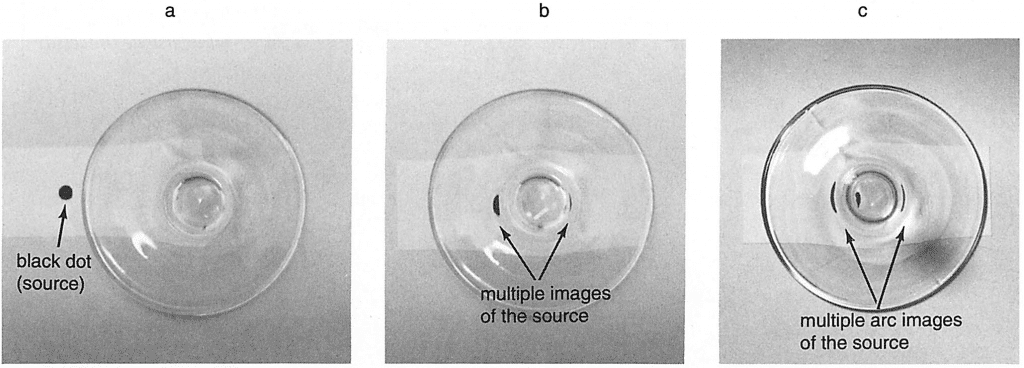
When there is no mass to affect it, light travels in straight lines, but insert a massive object and hey presto, the light deflects around it as if it were going through a curved glass lens. The area in which an object feels the gravitational pull of the Earth is called the Earth’s gravitational field. Each object in the Universe has a gravitational field and can therefore pull other objects towards it — like the Earth’s effect on the Moon, which keeps it in orbit.
Anything that enters an object’s gravitational field will feel a gravitational pull towards the center of the object. Imagine a ray of light traveling from a point to another with nothing in between. In this case the ray will travel in a straight line. Nevertheless, if the ray meets with an object along its way to the Earth, the object will pull the ray towards it as a consequence of the object’s gravity. Even though the ray of light will try to keep moving in a straight line, the gravity of the object is so strong that it bends the ray’s path. If a star’s light is being bent by a galaxy, from Earth it will appear that its light has changed, when in reality it would not have changed at all. This effect is called Gravitational Lensing and is currently one of the best tests for alternative theories of gravity, since one can measure the deflection of light and check whether it agrees with the theoretical predictions.
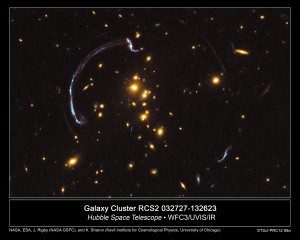
Extreme situations like the bending of light by galaxies cause problems for Einstein’s theory. When summing up the masses of the galaxies, we obtain the mass of the objects that are visible in the cluster. Comparing the predicted light deflection with the observed one, astronomers consistently find that the light is bent ‘more’ than is expected. The way to solve this issue is obvious. Introduce a completely invisible mass that increases the amount of bending until the predictions fit the observation: enter dark matter!
The idea of dark matter emerged a while ago. In 1933, Swiss astronomer Fritz Zwicky suggested it when studying how a galaxy rotation changes as one goes further away from the galaxy’s center. Zwicky observed that the speed or velocities predicted by Einstein’s theory should tear the galaxy apart. In reality, something must be keeping it whole. The idea of an invisible substance called dark matter was born.
Dark matter keeps the Universe together by opposing dark energy that pushes the Universe apart. Dark energy is related to the cosmological constant, previously discarded as Einstein’s biggest blunder, now reintroduced in astrophysicists’ equations to explain the accelerated expansion of the Universe.
The problem with dark matter is that it has never been seen. There is only indirect proof of its possible existence. Deandra Cutajar’s work focused on testing theories where no dark matter is needed. If true, this would put a small spanner into Einstein’s equations.
She tested two theories. They passed the first tests, but they have to pass many more to unseat Einstein’s general Relativity. Going back to the Swiss astronomer Zwicky, the two theories could explain why galaxies are not ripped apart by the speed with which they spin. Dark matter could be dead.
In another test, both theories failed to explain the extra gravitational effect observed in lensing. One theory failed miserably, while the other yielded less accurate results than Einstein’s general relativity. Dark matter is reborn; on the other hand, it cannot remain dark. It needs to be found and studied.
No theory of gravity has yet been found to beat Einstein’s equations. The explanation of how gravity works according to Einstein is better than Newton’s. A curved spacetime clearly explains why light is bent. Einstein’s theory of gravity still holds water and apart from the cosmological constant (his biggest blunder), he was right on most things. When his stunning prediction of how light can bend was observed, he replied, ‘I knew the theory was correct. Did you doubt it?’
What the future holds for any theory of gravity is uncertain, but what is definitely true is that the astrophysics group in Malta cannot accept the fact that we don’t understand 95% of the universe.
[ct_divider]
Gravitational lensing
More gravitational lensing
Gravitational lensing of distant star-forming galaxies (schematic) from ESO Observatory on Vimeo.




